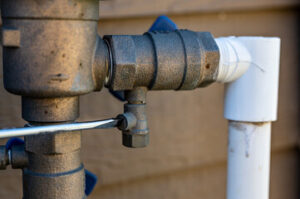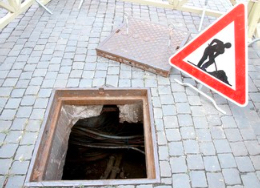Backflow Testing NYC helps to keep municipal water systems clean. Without it, chemicals, medical waste, debris, and other contaminants could backflow into the local water supply.

A backflow test kit is a tool that generates data that a knowledgeable, certified tester can interpret. Proper handling, maintenance, and annual verification ensure that the test kit works properly.
Backflow prevention devices are essential to keep contaminated water from entering the public water supply. Having your backflow tested routinely helps ensure that these devices function properly and protects you and your family from dangerous diseases and other health issues caused by drinking tainted water.
Many local governments and public water companies require that all businesses have their backflow prevention devices tested on a regular basis. Failure to test and maintain your backflow prevention devices may result in fines or other penalties. In addition, backflow testing can help protect your business from liability issues related to tainted water that is served in your facility.
A backflow test is a simple, inexpensive way to make sure that your backflow preventer device is working as it should. The process of conducting a backflow test varies wildly depending on the type of preventer you have installed in your pipes, but generally, a technician will simply shut off the valves in your backflow device and then use a test-cock to fill one of the valves with water while leaving the other open. They will then record the pressure reading from each of these test-cocks to determine whether the device is passing or failing.
In addition to the obvious reasons why you should have your backflow preventers regularly tested, these tests are also required by a number of laws and regulations that govern the safety of public water. Backflow testing is the best way to make sure that your backflow prevention devices are working properly and protecting you and your family from tainted water.
Finally, it is important to have your backflow tests completed by a certified professional. In addition to having the proper backflow testing equipment, a certified professional will have experience in the field and will understand how to correctly conduct the tests. This will ensure that your backflow testing results are valid and accurate.
Having your backflow preventers tested and maintained is easy, cheap, and necessary for the health and safety of your home. To get the best results, have your backflow preventers tested by a certified professional and have any that fail replaced immediately.
How Do I Test My Backflow Prevention Devices?
It might not be the first thing on your to-do list, but skipping out on backflow testing can lead to hefty fines from the city or, even worse, water contaminated with sewage. Fortunately, you can avoid this situation by having a certified backflow tester test your backflow preventer devices regularly.
Backflow prevention devices are designed to protect potable water from contamination by backwash—which occurs when contaminated water reverses flow and enters clean water lines. While this might seem gross, it poses a serious health concern as it can contain diseases like cholera, typhoid, and dysentery.
The process of backflow testing consists of several steps, including shutting off the downstream shut-off valve and connecting test kit hoses to each device. This allows a backflow tester to measure the pressure inside your plumbing system and determine whether any devices are experiencing backflow. Additionally, a backflow tester can identify any potential problems with your water system that may be causing backflow.
A certified backflow tester uses specialized equipment to conduct a backflow test. These devices include gauge assemblies and backflow testing kits, which allow them to check for the presence of contaminants and assess the functionality of a backflow preventer device. They also isolate the backflow preventer valve to prevent water from flowing in the wrong direction during the test. In addition, the backflow tester will need to shut off the water main for about 30 minutes during the test.
Once the backflow test is complete, a backflow certified tester will prepare a report of its findings. This report will be submitted to the local governing body for approval. The process of submitting this paperwork can take up to a week, so it’s important to partner with a backflow testing company that offers a streamlined software solution.
Using Formlink’s backflow testing software can save you valuable time by streamlining the inspection process. Our software helps you record backflow test results quickly and efficiently, allowing you to submit them online without having to wait for your local water board to process them. Additionally, our software can automatically email your backflow test reports to the appropriate parties.
What Should I Do If My Backflow Prevention Devices Fail?
Backflow prevention devices prevent contaminated water from entering your commercial building’s plumbing system. While your backflow device is a critical component of your building’s plumbing system, it is not foolproof. Sometimes, your backflow device will need repair or replacement. Annual testing and routine maintenance by experienced, certified technicians is a great way to keep your backflow prevention system in working order.
If your backflow test shows that your backflow prevention assembly is in need of a repair, it is important to have the assembly repaired as soon as possible. This is to avoid the risk of back-siphonage which may result in used, dirty water flowing into your building’s plumbing system and contaminating the drinking water that you rely on for health and wellness.
There are many reasons why your backflow device may need a repair. One reason could be that the first check valve is not opening properly at certain water pressures. Another reason is that the second check valve may not be stopping water from leaking past it. A third possibility is that the relief opening is not opening properly.
It is important that your repair technician is familiar with the installation of your backflow device. This is because the repair technician will need to know how to remove each component from the backflow assembly body and evaluate the components for what caused them to fail. For example, if a check assembly is not releasing water through its opening, it will be important that the repair technician knows whether or not there is a physical obstruction such as a piece of debris lodged between the disc and the seat of the valve.
Regional conditions like temperature, turbidity and mineral content can shorten the life of your backflow prevention device. This is why it is important to schedule regular inspections by certified technicians to catch these potential problems before they turn into costly repairs or backflow contamination.
It is also important to remember that a repaired backflow prevention device must be recertified after being repaired. The certified tester will use a gauge to add or relieve pressure in the backflow device and then record the results on the backflow test report.
What Should I Do If My Backflow Prevention Devices Pass?
Backflow prevention devices are essential equipment that provides clean water to homes, businesses, schools, and hospitals. Unfortunately, these devices can become damaged or fail for a variety of reasons. As such, it’s important to test your backflow preventers regularly.
Testing a backflow prevention device is easy and fast. During the test, a plumber shuts off the main water valve to the backflow preventer and then adds or relieves pressure by hooking up test kit hoses. This allows the technician to check for any signs of wear and tear in the assembly, including broken parts or cracks. Additionally, the tester will use a calibrated testing device to ensure accurate results and to protect public health and safety.
Once a backflow preventer passes inspection, the tester will attach a tag to it that shows the date of the test, who conducted the test, what the backflow prevention device is connected to, and any other specific information about the device. The tags will also include the tester’s contact information. It’s important to have your backflow prevention devices tested by a specialized plumber who knows the ins and outs of these complex pieces of equipment.
You can find a certified backflow preventer tester by searching online or asking your local plumbing company for recommendations. Once you’ve found a backflow test specialist, schedule an appointment. If your backflow preventer fails inspection, notify the local water authority. It’s essential to do this as quickly as possible so the backflow preventer can be repaired or replaced before it causes backflow contamination that could affect the public water supply.

